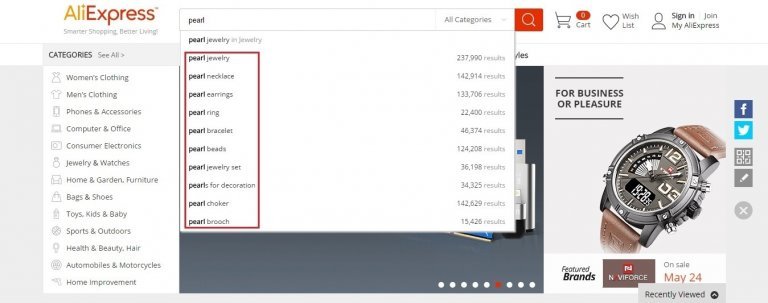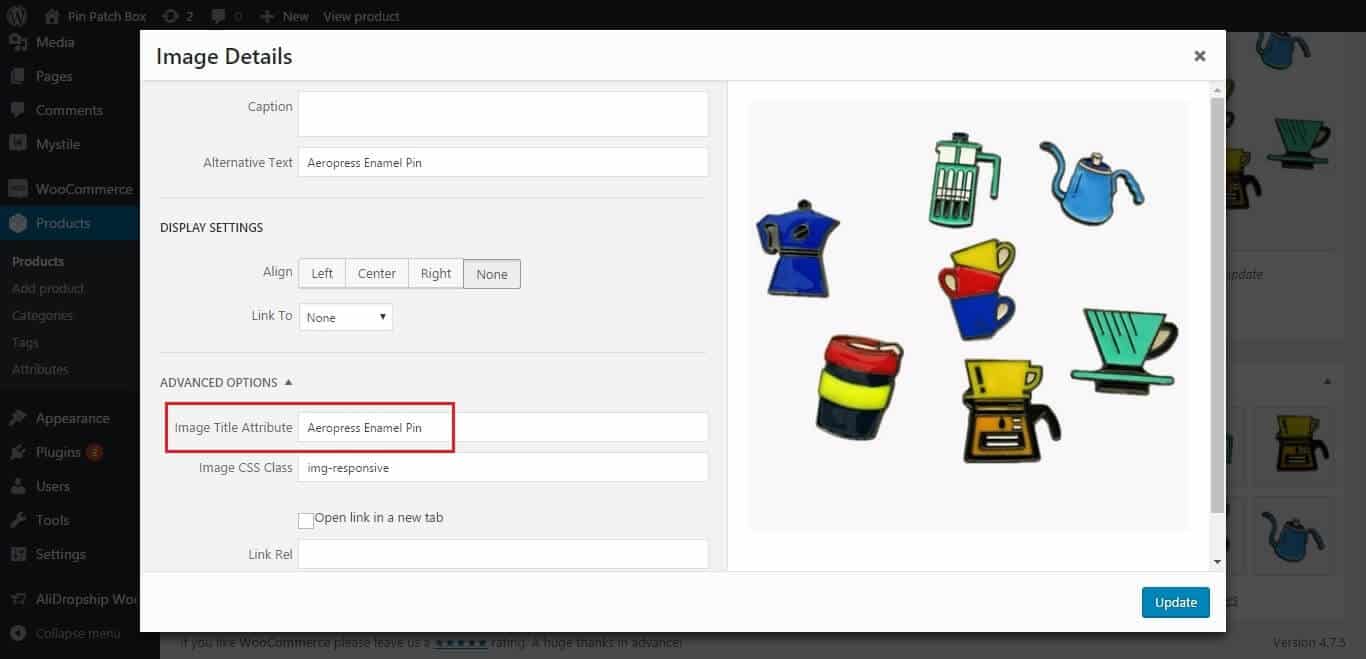
Most likely, you saw numerous guides for SEO e-commerce websites.
Most likely, they look like rocket science for you.Every new product pages on your online store should be SEO optimized according with these rules and guides – so stay tuned!
But it doesn’t mean that you should leave this area unattended. Believe us, you can easily optimize your dropshipping website with your bare hands!
In this article, we will try to explain difficult things in simple words so that you won’t struggle with SEO anymore. Don’t be shy to ask us questions in the comments section!
Table Of Contents
- Why is SEO important for your e-commerce website?
- SEO for E-commerce website on the preparatory stage
- E-commerce SEO on the development stage of your website
- Seo for ecommerce product pages: editing stage
Why is SEO important for your e-commerce website?

SEO, or search engine optimization, is vital for dropshipping business. The key to the success of your store are the buyers: the more visitors you attract to the site, the more purchases they will make, and the bigger profit you will get.
So the question is, how can Internet users locate your webstore?
And that’s exactly when SEO comes to play.
Obviously, you can spread the word about your dropshipping store through social networks. Facebook and Instagram work like miracle – you can learn about it from our own experience and from success stories of our clients.
But still, what do you do when you need to find something online? You look it up in Google! You look through several pages that are shown first, and you rarely even go to the second page, to say nothing of the third and further pages.
Therefore, as a dropshipping store owner, you need to make your website shown as highly on the search engine results page as possible. What can you do to make it happen?
SEO for E-commerce website on the preparatory stage

Ideally, your SEO efforts should start the exact moment you decided to start dropshipping business.
We’re talking about the niche choice now.
As you probably remember, we have already covered this aspect before. In short, you need to make sure that the niche itself will be good for SEO. It is one of the most important aspects of choosing a niche for dropshipping business because it lays at the foundation of everything you will do further. If the niche itself has a limited potential for SEO, you will have a really hard time trying to make your store popular. So research our E-commerce SEO guide carefully before you make up your mind on a certain niche!
E-commerce SEO on the development stage of your website

Similarly, you need to start thinking about e-commerce SEO at the very first stages of designing and developing your dropshipping website.
The reason is, the better your website is structured and organized, the easier it is for search engines to scan it. If you put your category pages and product pages too far away from the main page, it will:
- Disorient search engines – they won’t be able to reach and scan these well-hidden pages, so you won’t get as high rankings as you could have;
- Make your store visitors frustrated – normally, it should take clients not more than 3 clicks to reach any product page from the main page.
It means that the first step in developing your future dropshipping store is thinking out its structure. Your e-commerce website needs to be organized logically, clearly and quite simply. And to achieve that, you need to start with choosing the most relevant keywords.
SEO for e-commerce website: choosing keywords
Why would you need to start with keywords?
Well, because you will use them to create and name product categories.
Most likely, you already have one or two most relevant keywords at this point – you generated them while you evaluated SEO potential of your niche.
Obviously, 1-2 keywords are not enough. You will need much more of them to:
- Make a logical structure for your dropshipping store;
- Select products and product categories that are the most favorable for SEO;
- Pick good names for every category.
So where can you get enough ideas for keywords?
- Go to Wikipedia. Quite surprisingly, it is possible to find something interesting there for some types of products. For example, let’s say you are going to sell pearls jewelry and decorations. What does Wikipedia say on that?

As you can see, you can pick at least 5 keywords from Contents section alone: freshwater pearls, saltwater pearls, natural pearls, cultured pearls, and imitation pearls. A great start!
Of course it doesn’t work with all the niches and products. Still, check it quickly at the beginning of your search to be 100% sure you didn’t miss anything.
- Use Google Autocomplete function. For example, you want to sell items made of wool – great idea! Let’s see what we can get from the search engine:

As you can see, Google can show you some really nice ideas – maybe you didn’t even think about them at first! If they are shown automatically, it means that people search them quite often, and that’s exactly what you need.
- Use Related search field. Again, let’s take the same wool:

It is clear from this example that people who search 100% wool are also looking specifically for wool yarn, wool fabrics etc. Therefore, this is how you can narrow down your keywords and make them more specific.
- Use AliExpress autocomplete function. If you’re going to use AliExpress to select dropshipping suppliersfor your store, it is logical to check what kinds of items are offered there. Plus, it will give you a range of ideas about keywords:

- Use Google Keyword Planner to get more ideas AND evaluate if they have enough potential:

You will see how often people look for this or that keyword:

Don’t limit yourself only with keywords that have the biggest amount of searches! Keywords with medium and low frequency can be a good addition because they are less competitive. Also, they are more specific: it means that they can bring you more targeted visitors who were looking EXACTLY for this words combination. Therefore, conversion rate will be higher.

SEO for e-commerce website: site architecture
Okay, now you have several keywords that are relevant and interesting for your potential buyers. Great! Now it’s time to get to the site architecture.
(Please note that you need to research this part only if you are making your own dropshipping store yourself. In case you are going to purchase a ready-made store, you don’t even have to worry about it – everything will be professionally done by qualified specialists).
Generally speaking, when you deal with site architecture, you need to make it as plain and clear as possible. If your site structure is good enough, it will be easy for search engines to access and index the content, which means you will get higher rankings.
What is also important, an understandable site structure is valuable for your clients. And Google takes this into account when it ranks websites! Google analyzes behavior of people who visit your site. If your visitors don’t stay long in your online store, and if they don’t want to click any store links to learn more about your offers, Google doesn’t attribute a high rank to this site. And to make your potential customers more interested in staying on your site longer, you can:
- Build your site architecture around the keywords you previously found. To do this, you need to understand what search queries can lead people to your site, and what exactly can people search when they already are visiting your store.
- Make a logical hierarchy. Using the most relevant keywords, you need to create an architecture that helps both store visitors and search engines easily find their way to products pages from the home page. Create 4-10 unique product categories, and divide each of them into several subcategories. Don’t try to make too many!
- Think about internal linking. Every page in your webstore should have at least one link to another page within the site, and at least one link from another in-site destination. It is important because search engines use such links to understand which pages on the site are valuable, and how can one get there. The structure you have created should be suitable for internal linking.
To improve the navigation within you webstore and enhance your customers’ experience (and also to get higher rankings), you can also implement some additional elements. For example, let’s look at so-called breadcrumbs:

Breadcrumbs are a supporting navigation element that helps both your store visitors and search engines understand where they are now, and how they can find their way back. Breadcrumbs are commonly used on websites with a large amount of products organized in a hierarchical way – that’s just what you need! With breadcrumbs, it is easier to make visitors stay on your website longer, and this can greatly improve your rankings.
Also, think about a sitemap: it is essential because it helps Google research the webstore and index each page. A sitemap makes it easier for Google to go through the website structure and access content, and therefore, you can get higher rankings.
Speaking of site architecture, we should mention that your store should be mobile-friendly. Take your time to make sure the design of your webstore is responsible enough.
Of course these and many other related issues mostly refer to the technical side of optimizing your webstore. Therefore, if you are not sure you can perform these tasks yourself, it would be wiser to buy a ready-made custom store meeting all your business needs.
Seo for ecommerce product pages: editing stage
Okay, here comes the part that you will DEFINITELY be doing yourself. Every new product page on your dropshipping store should be SEO-friendly, so stay tuned and follow these rules and guides to optimize all of them!
We have already discussed the changes you can make to a product page to make your customers more interested, and to increase conversion rate. Still, there are much more things you can do!
For dropshipping stores, on-page SEO aspect is especially relevant. When you add seller’s items to your store, you automatically import all the product descriptions, photos, reviews etc., which means your store content is not unique. And if you fix this, you can boost your store performance without any additional expenses.
So what do you need to do for ecommerce product page optimization?
- Edit product names.
The names of AliExpress items are long, confusing, and sometimes they don’t even make much sense. As soon as you’ve imported an item, cut its name down to make it nice and clean. Just leave the most important 3-4 words that contain the category keyword and help your visitor understand what it is.

It is best to leave the name of a category, and 1-2 unique features of a product:

Now this name is short, understandable, and more or less unique. It is based upon the ‘enamel pin’ keyword. The new title contains the name of a product category (‘pin’), the material of the product (‘enamel’) and its shape (‘aeropress’). That’s everything your customer needs to know!
- Edit product URL.
In the previous example, we have changed the product name to a more SEO-friendly one, but the URL is still ugly:

If you leave it just like this, it will be inconvenient for customers, and unwelcomed by search engines. No one likes URLs that looks spammy, with numbers and letters that don’t make sense, or with lots of random words. Let’s make it short and clear:

Now it contains the necessary keyword, and looks short, clear, and relevant. Search engines will totally love it!
- Write the best product descriptions and remember about SEO.
This is absolutely essential! Write something unique and interesting about each product (you’re passionate about your niche and know everything about your niche, right?) You need to concentrate on the product’s features and benefits to make it appealing for your customer, and you definitely shouldn’t copy the description from a different website. The text should be about 100-150 words long. While creating your best product descriptions, don’t forget about SEO aspects: mention the keyword several times (but do not be too spammy).
- Write SEO ALT-tags for your images.
If you include images in your product description, make sure to write ALT-tags for them – and don’t forget to include the keyword!

This is really easy to do, and this simple action helps your webstore become more accessible. This information is valuable to search engines, and Google pays great attention to ALT texts.
- Import product reviews.

Well, this is obvious. If you take real reviews that real people left on the supplier’s site, your store visitors will be able to learn much more about the product. Also, these reviews provide your store with a unique content that is regularly updated, and search engines really like it.
- Optimize categories and subcategories.
Don’t forget about them! They are as important as single product pages.

Remember that SEO texts for these pages should be longer, about 300 words. You will also need to include the keyword into the text, but don’t put it too often: two or three are enough.
As you can see, On-Page e-commerce SEO is nothing like rocket science. You can totally do it!
Of course we didn’t cover all the possible ways to optimize your dropshipping store in this article. There are many things that are too ‘technical’, so they are not always necessary for a regular user. However, if you want to learn about something more special, feel free to leave your request in the comments section below.
And remember – even if you don’t want to deal with all this yourself, it doesn’t mean that your e-commerce website will forever stay SEO-unfriendly. Just order a SEO Starter package from qualified specialists, and soon you will notice tons of positive changes.


0 Comments